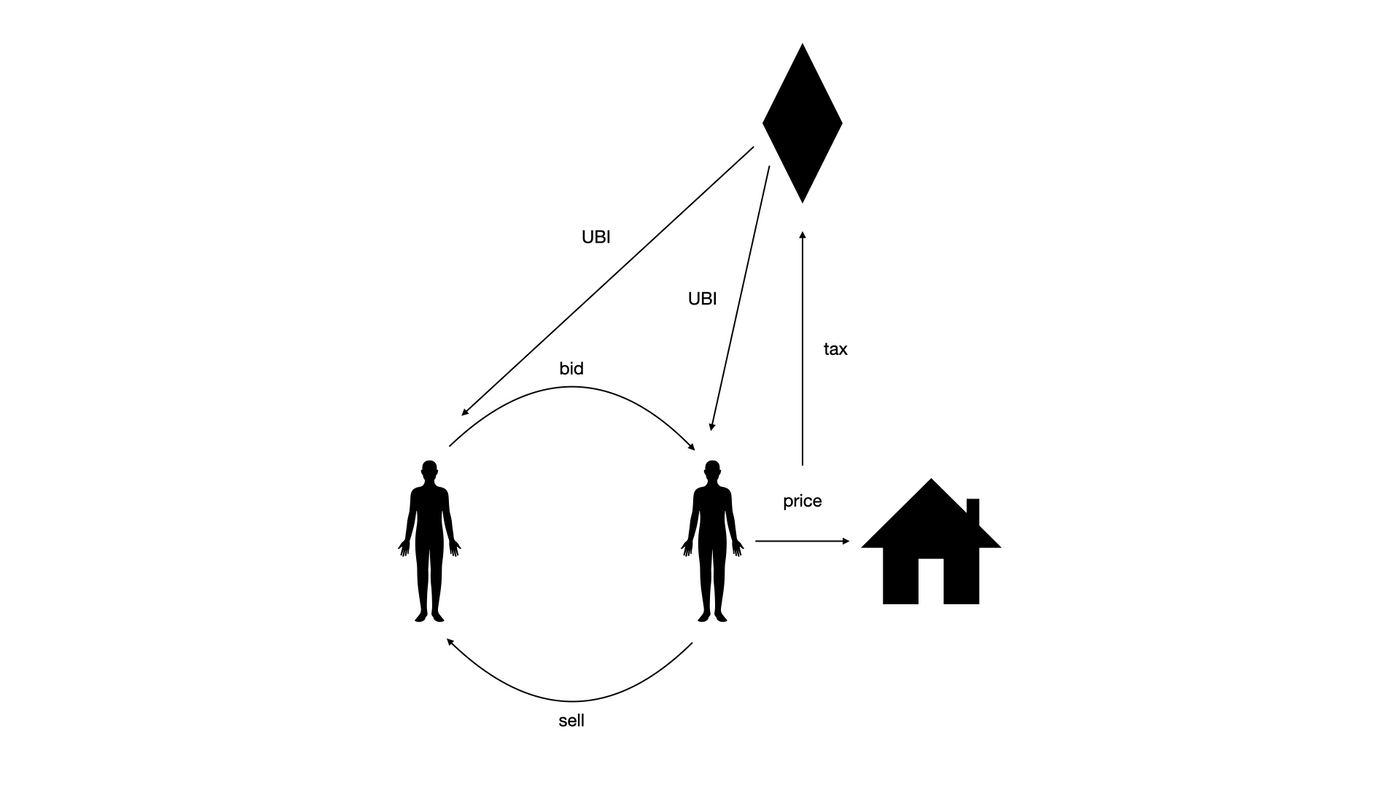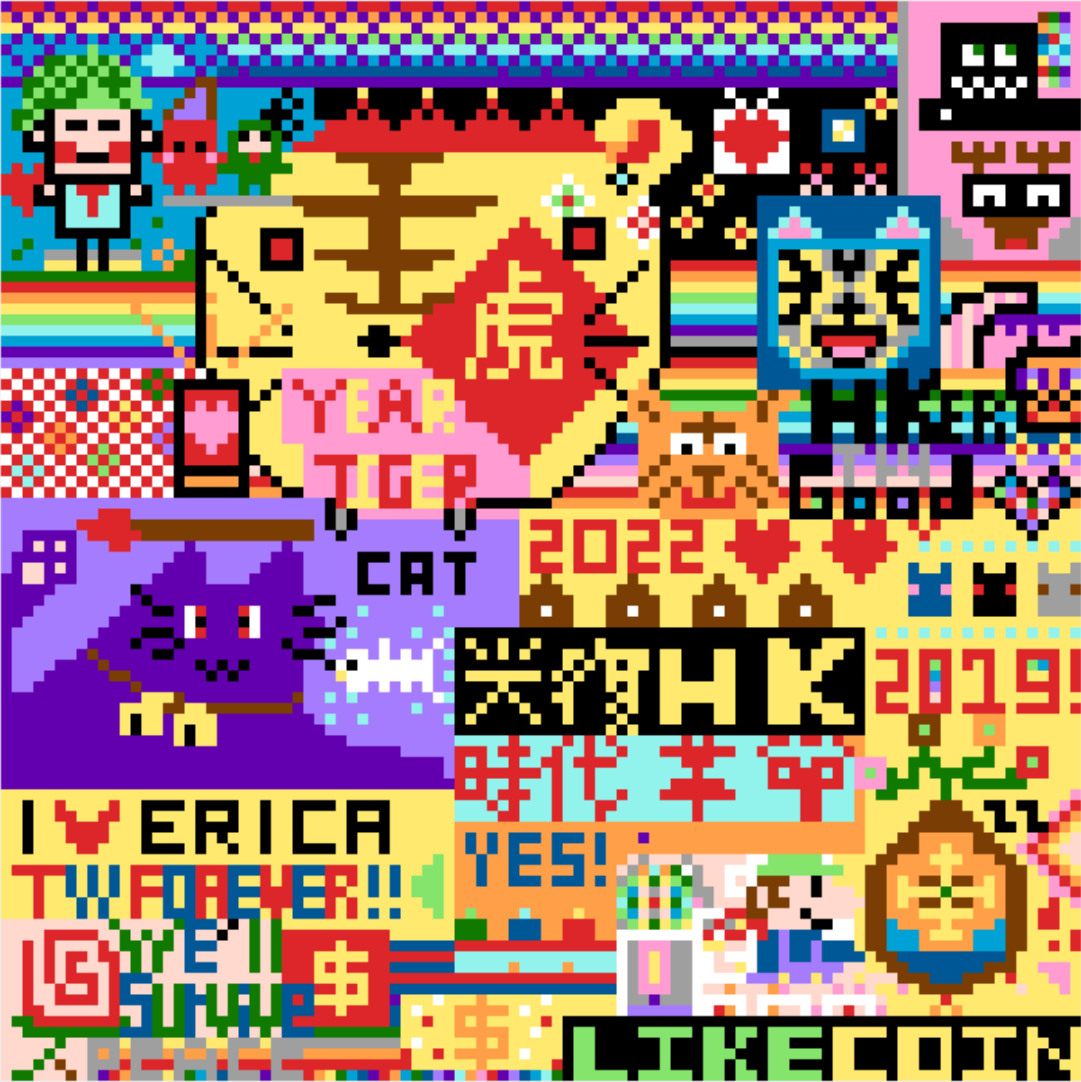
English official account of Matters Lab, with the mission to create a freer and fairer creator ecosystem. For Mandarin community: @hi176 Announcements related to Web3: @web3
Radical markets can work on blockchain. Our web3 experiment–The Space–shows how.
“ Markets face an analogous difficulty that often infects politics. The preferences of the richest people can easily run roughshod over everyone else. What about a hybrid design that combines the best elements of markets and democracy, combining their advantages and canceling out their downsides? ”
- Radical Markets by Eric A. Posner & E. Glen Weyl
“ Imagine all the people / sharing all the world…”
- John Lennon
Over the last few months, Matters Lab has launched and tested a prototype of The Space, a large-scale experiment where players can tokenize, own, and trade color pixels on a digital public graffiti wall on blockchain.
Although The Space is inspired by similar collaborative social experiments like Reddit Place and Ai Weiwei and Olafur Eliasson’s public art Moon, The Space goes beyond a collaborative canvas and ventures into radical market concepts like Universal Basic Income (UBI) and Harberger Tax.
We are fascinated by questions like: Can radical markets work as a blockchain experiment? How can we empower content creators with new economic models to earn from their creations? How will a community collaborate or manage conflicts in a truly decentralized and autonomous environment?
When Reddit released a collaborative art project in 2017, users quickly filled up a digital whiteboard of 1000*1000 pixels with national flags, LGBT flags, Internet memes, and reenactments of the Mona Lisa. Unfortunately, Reddit Place was taken down after 72 hours before we got to see its full potential — and all the artworks got buried in the information cemetery of the Internet, though you can see a time lapse video of the project here.
On a centralized server, a decision maker has absolute control over the lifespan of a project. But on web3, where everything is recorded on a public ledger, we hope The Space will last forever.
What is The Space?

The Space is an everlasting, Draw-to-Earn public space that runs on decentralized Web3 and supported by blockchain where members can tokenize, own, trade, and color pixels on a digital public graffiti wall.
The Space recreates the “game” from the Reddit Place, while adopting Non-fungible tokens (NFT) to secure the rights for each pixel. The Harberger tax governs the public space and the Universal Basic Income (UBI) system ensures that every participant can receive benefits.
With a smart contract, the mechanism can be stored in blockchain publicly, transparently, and permanently, and can be checked or confirmed by everyone.
The Space is backed by blockchain and owned by a decentralized autonomous organization (DAO). DAOs are internet-native entities where members collectively come together to make rules and decisions from the ground-up, without a central leadership.
This means authorities can’t shut down The Space and all artworks will be accessible, forever, unlike similar projects on web2.
What is the Harberger Tax?

The Space is the first large-scale experiment to merge blockchain applications with concepts like the Harberger Tax and Universal Basic Income (UBI) to solve the dilemma between public and private ownership.
The concept of Harberger Tax skyrocketed in popularity when Glen Weyl and Eric Posner discussed it at length in their Radical Markets book and essay Property Is Only Another Name for Monopoly.
According to the article: What is Harberger Tax & Where Does The Blockchain Fit In? by Simon de la Rouviere, the Harberger Tax is an economic policy that optimizes the distribution of public resources with the power of the market to increase the society’s welfare.
The Tax ensures that a society can efficiently utilize public resources to boost the economy and the welfare of everyone involved. It uses market forces to regulate public assets, reducing inefficiencies in property and monetary allocation.
The article also states that there are two main principles of the Tax:
- Citizens put prices on their own property and pay taxes for a percentage of the price.
- The property is always on sale. At any given point in time, anyone else can purchase the property from you at the price that you set.
These principles prevent a certain group monopolizing the wealth of the society, but create equal opportunities for everyone to achieve wealth.
Rouviere writes in his article:
With Harberger tax, the inability for asset owners to set high, monopolistic, hold-out prices (it’s costly to them personally) OR the ability introduce additional costs to bargaining (seller always sets the price), it more readily allows the market to allocate property to productive owners.
Some examples of smaller-scale but highly innovative projects of the Harberger Tax are This Artwork Is Always On Sale, Wild Cards, and The Geo Web Project.
The Gameplay Mechanism of The Space

In The Space, every pixel is a tradable NFT. Pixel owners can edit the colors of their pixels to create any artwork they like on The Space’s digital wall through blockchain transactions. See it live in action here.
Pixels are tokenized as ERC721 tokens and traded under Harberger Tax: the owner of each plot must mark a price for his plot and make it available for purchase.
Drawing from the Harberger Tax, pixel owners on The Space can set any price they want for their pixels. They must also pay a tax, set at a certain percentage, of their land price to the smart contract, of which a part will be returned to all plot owners in the form of a Universal Basic Income (UBI). Not every person will get the same income, however, as the UBI is distributed towards pixels and owners of larger amount of pixels can share higher dividends.
The Harberger Tax encourages each pixel to remain on sale at all times. We want to challenge existing ideas of ownership and explore a new kind of ownership that transcends socialist or capitalist markets.
So, in brief, the rules of The Space are:
- Pixel owners can set any price for their pixels and pay taxes based on their price.
- If the owner doesn’t want to sell the pixel, he or she can hike up the price to prevent purchase. But this means the owner also has to pay a higher tax to keep the pixel.
- A percentage of the taxes received is recorded on smart contract and distributed to each pixel owner on The Space in the form of a Universal Basic Income (UBI).
- Whether pixel owners decide to sell or keep their pixels, the community benefits from it. If they keep their pixel, the community enjoys a higher UBI. If they sell their pixel, the community gets to own pieces of artwork that they like.
In setting these rules, we wanted to establish the most effective allocation of limited public resources and maximize the liquidity of the “pixel market”.
The Space is a public resource, but we are privatizing that for buyers in the market. On the other hand, although there’s privatization and trading, The Space still essentially belongs to the public.
What is interesting is that Web3 and cryptocurrency brings to the table a new form of ownership that goes beyond capitalism and socialism that cannot be categorized. The closest description is a radical market: a genuinely open, free, and competitive market that can lead to great equality, prosperity, and cooperation.
Anticipated Challenges
Even though The Space is set up to be a mutually beneficial game, we anticipate that there will be three types of The Space participants when we release it to the public:
- Creators: deliver messages, contribute to social issues, create artwork, and are willing to pay taxes for it
- Speculators: purchase pixel areas where prices are predicted to rise, then sell them at higher prices
- Hitchhikers: buy the cheapest pixels as their tickets to receive UBI, and carefully evaluate the balance between the amounts of their UBI and Harberger taxes they need to pay.
Moreover, creators can either collaborate on creating a grand project that contributes to the society or maliciously destroy others’ projects through transactions. It’s intriguing to see how participants will interact with each other on The Space.
Testing Out The Space

We have been testing out a Phase One prototype of The Space that does not involve real money. We wanted to launch it on a smaller scale with time limits to observe, adjust, and troubleshoot. With repeated reiterations, our goal is to improve the user experience, the social dynamics, and refine the economic structure.
Since December, we’ve launched five game-test events for a total of 300 creators who colored at least 50,000 tokens as pixels.
In our latest test launch, 50 Taiwanese artists co-created on The Space and the final artwork was minted as NFT on akaSwap. 99% of the proceeds will go towards @IMC_Worldwide, @DirectRelief, and @save_children.
Although we haven’t implemented any kind of tax or reward mechanism in our prototype, we already saw, on this small scale experiment, how players collaborate with each other to tackle problems and create new economies.
Stay tuned for our next article, where we unravel how participants interacted, solved conflicts, and co-created on The Space.
The Space: a radical Web3 social experiment
At the Matters team, we are passionate about operating a Decentralized Autonomous Organization (DAO) to build a community of self-governed users, which we have successfully done with Matters.news.
We’ve taken it one step further with The Space, by setting up a collaborative social experiment that will always be accessible, forever, on blockchain. Anyone can participate in The Space, as long as they hold SPACE tokens.
Radical markets will probably never become a reality. In practice, it causes far too much upheaval to how companies, markets, and nations work. The Space presents a “what if” controlled social experiment, a technology that can be built and improved upon. This is an incremental and moderate idea we can have fun with.
In one participant’s words’:
The Space is a social experiment, an experiment with a positive result. Even communities without leaders can collectively create something beautiful, which is what I love about this game. The cohesive force is fascinating.
At the end of the day, The Space is a social experiment to deduce how players collaborate, create, and at times, confront each other in a world where they make their own rules without a central government and share the profits together.
We’re excited to see how The Space goes. What about you?
The final version of The Space is debuting on testnet in April, 2022 and will be officially launched in May 2022.
Interested in NFTs? Find our inaugural NFT collection, Traveloggers, on OpenSea here.
Follow us on Medium and @MattersLab and @thespace2022 on Twitter for the latest news and insights on NFT and web3, or sign up for our email newsletter on our website.
喜欢我的文章吗?
别忘了给点支持与赞赏,让我知道创作的路上有你陪伴。
发布评论…